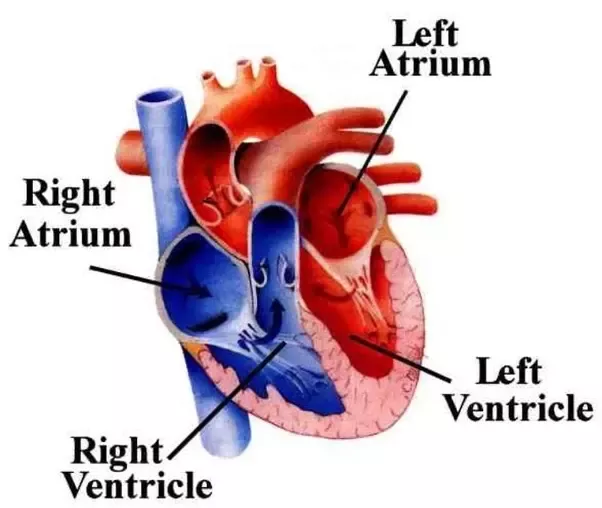The heart is one of the most vital organs in the human body, responsible for pumping blood and delivering oxygen and nutrients to all parts of the body. It is divided into four chambers: the left atrium, the right atrium, the left ventricle, and the right ventricle. While both ventricles serve the same purpose of pumping blood, there is a significant difference in their thickness.
The left ventricle is thicker than the right ventricle due to its role in pumping oxygenated blood to the rest of the body. Let’s explore the reasons behind this anatomical difference.
The Functions of the Left and Right Ventricle
The left ventricle receives oxygen-rich blood from the left atrium and pumps it into the aorta, which then distributes it to the rest of the body. This blood contains a higher concentration of oxygen and nutrients that are essential for the proper functioning of organs and tissues. The left ventricle has the significant task of ensuring that oxygenated blood reaches all corners of the body, including muscles, organs, and tissues.
In contrast, the right ventricle receives deoxygenated blood from the right atrium and pumps it into the pulmonary artery. From there, the blood is transported to the lungs, where it gets oxygenated and returns to the heart. The right ventricle’s function is to pump blood to the lungs for oxygenation.

Credit: www.chegg.com
The Need for Thicker Muscles in the Left Ventricle
To fulfill its role, the left ventricle faces more resistance and requires a higher amount of force to pump blood out into the systemic circulation. This is because the systemic circulation provides blood supply to the entire body and encompasses a larger network of blood vessels. The walls of the left ventricle are thicker to generate the necessary force for efficient blood circulation throughout the body.
The cardiac muscle cells, known as cardiomyocytes, are responsible for the contraction of the ventricles. The left ventricular muscles are thicker and more robust than those of the right ventricle. This increased thickness allows the left ventricle to generate greater contractile force, ensuring a stronger and more effective pump for the systemic circulation.
Credit: www.quora.com
Pressure Differences Inside the Ventricle
Another reason for the difference in thickness between the left and right ventricle is the pressure each chamber needs to overcome. Due to its role in systemic circulation, the left ventricle experiences higher pressure compared to the right ventricle.
When the left ventricle contracts, it needs to overcome the arterial pressure spread across the entire body. Arterial pressure is higher in systemic circulation than in pulmonary circulation. The walls of the left ventricle must be stronger to withstand these higher pressures and ensure efficient blood flow.
On the other hand, the right ventricle pumps blood under lower pressure since it is only responsible for pulmonary circulation. The thinner walls of the right ventricle are sufficient to withstand and accommodate the lower pressures observed in the pulmonary circulation.
Adaptations of the Left Ventricle
Over time, the left ventricle undergoes structural adaptations to handle the increased workload it encounters. Regular exercise and physical activity contribute to these adaptations. Regular aerobic exercise increases the volume of blood pumped by the heart with each beat, known as stroke volume.
In response to regular exercise, the left ventricle expands in size to accommodate the increased stroke volume. This adaptation is known as eccentric hypertrophy. The increased size allows the left ventricle to deliver more oxygenated blood to meet the body’s demands during exercise.
Conclusion:
The left ventricle is thicker than the right ventricle to fulfill its crucial role in systemic circulation and distribute oxygenated blood throughout the body. Its increased thickness allows it to generate more force and withstand higher pressures, ensuring efficient blood flow. Regular exercise further enhances the left ventricle’s capabilities, allowing it to adapt and meet the body’s increased oxygen demands during physical activity.
Frequently Asked Questions Of Why Is The Left Ventricle Thicker Than The Right: Exploring Cardiac Anatomy
Why Is The Left Ventricle Thicker Than The Right?
The left ventricle is thicker due to its role in pumping oxygenated blood to the entire body.
What Are The Functions Of The Left Ventricle?
The left ventricle pumps oxygenated blood to the body, ensuring the delivery of oxygen and nutrients.
How Does The Right Ventricle Differ From The Left?
The right ventricle pumps deoxygenated blood to the lungs for oxygenation, thus requiring less muscle mass.
Why Does The Left Ventricle Have A Greater Workload?
The left ventricle has a greater workload as it pumps blood throughout the body’s circulatory system.

